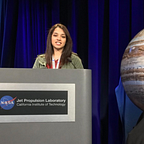This is Why Mercury and Venus are Moonless
Series: Moons of the Solar System
You may have guessed the answer in the first case. Mercury is just too close to the sun, and that is all there is to it. Any Moon that Mercury might have had or tried to capture would be in an unstable orbit because the sun would tug at it. The Moon will eventually either spiral away and orbit the sun or would get dislodged from a stable orbit around Mercury and crash into the planet.
In Venus’s case, the answer isn’t so simple. Yes, Venus is also close to the sun, but its gravity is strong enough to be able to hold a Moon. And yet it doesn’t have one. There are two primary theories to explain this.
The first theory purports that Venus did have a Moon, but the sun stole it away, like in Mercury’s case. The second theory, which is considered to be more probable, is a little more complicated and requires us to understand how earth got its moon.
At one point in Earth’s past, a Mars sized body slammed into it, causing a partial evaporation of the earth and complete destruction of the body. The debris that flew off coalesced in orbit and formed the Moon. Similarly, the Double Impact Theory states that Venus was impacted twice. The first impactor collided with the planet when Venus used to rotate clockwise, like all the planets today do. This impact formed a Moon, not unlike the Earth’s own, in orbit around Venus. The theory goes that several million years later, an even bigger body impacted that planet, sending it into its retrograde rotation it is today. The change in the direction of rotation weakened the tidal forces on Venus’s Moon, sending it slamming into the planet to disappear forever.
Every 2 weeks we send out a newsletter giving you an update of all that is happening at TeamIndus and opportunities for you to engage with us.
